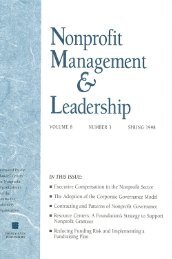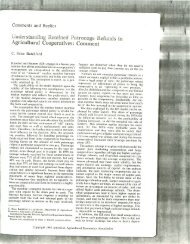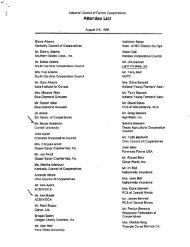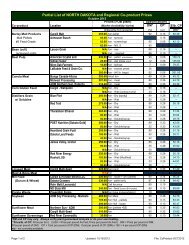Sunflower Production Field Guide - Your "Home Page"
Sunflower Production Field Guide - Your "Home Page"
Sunflower Production Field Guide - Your "Home Page"
Create successful ePaper yourself
Turn your PDF publications into a flip-book with our unique Google optimized e-Paper software.
6<br />
<strong>Production</strong><br />
World <strong>Production</strong><br />
(John Sandbakken and Larry Kleingartner)<br />
The sunfl ower is native to North America but commercialization<br />
of the plant took place in Russia. Sunfl ower<br />
oil is the preferred oil in most of Europe, Mexico and<br />
several South American countries. Major producing<br />
countries or areas are the former Soviet Union,<br />
Argentina, Eastern Europe, U.S., China, France and<br />
Spain (Table 2). These seven countries/areas of the<br />
world produce about 80 percent of the world’s oilseed<br />
and nonoilseed sunfl ower. Historically, the former Soviet<br />
Union has been the No. 1 producer of sunfl ower,<br />
producing about 35 percent of the world’s production<br />
annually. During much of the 1970s, the U.S. was<br />
the world’s second largest producer, but in the 1980s,<br />
Argentina became fi rmly entrenched in second place.<br />
Table 2. World <strong>Production</strong> of All Sunfl ower<br />
U.S. <strong>Production</strong><br />
Acreage<br />
The fi rst sustained commercial production of oilseed<br />
sunfl ower in the U.S. occurred in 1966, when about<br />
6,000 acres were grown. Total combined acreage of<br />
oilseed and nonoilseed sunfl ower increased gradually<br />
in the late 1960s and expanded rapidly in the 1970s,<br />
reaching a peak in 1979 at 5.5 million acres. The U.S.<br />
share of world production has declined in recent years<br />
as production in Argentina and other countries has<br />
increased. During the peak period of U.S. production,<br />
the U.S. produced about 15 percent of the world’s<br />
sunfl ower production. In 2005, the U.S. market share<br />
was only 6 percent.<br />
The rapid acreage increase in the late 1970s was<br />
stimulated by a variety of factors. Favorable yields in<br />
1977 and 1978 brought about by improved hybrids<br />
and favorable weather conditions were key factors,<br />
along with excellent prices when compared with competitive<br />
crops.<br />
1996- 1997- 1998- 1999- 2000- 2001- 2002- 2003- 2004- 2005-<br />
2006-<br />
2007<br />
1997 1998 1999 2000 2001 2002 2003 2004 2005 2006 Forecast<br />
Argentina 5.45 5.68 7.13 5.80 2.94 3.73 3.34 2.98 3.75 3.82 4.20<br />
Eastern Europe 2.92 2.18 2.59 2.75 1.67 1.86 2.02 2.67 2.27 2.11 2.17<br />
European Union 3.87 4.08 3.44 3.10 3.27 3.03 3.72 4.07 4.07 3.72 4.06<br />
China, Peoples<br />
Republic of<br />
1.42 1.17 1.46 1.77 1.95 1.75 1.95 1.82 1.70 1.83 1.85<br />
former USSR 5.37 5.41 5.74 6.89 7.27 4.94 7.19 9.35 8.00 11.32 11.20<br />
United States 1.60 1.67 2.39 1.97 1.61 1.55 1.11 1.21 .93 1.82 .92<br />
India 1.30 1.16 1.17 .87 .81 .73 1.06 1.16 1.45 1.50 1.43<br />
Turkey .67 .67 .85 .82 .63 .53 .83 .56 .64 .80 .90<br />
Other 1.99 1.87 2.83 2.98 3.01 3.55 2.74 3.07 3.58 3.25 3.77<br />
World Sunfl ower 24.63 23.89 27.60 26.95 23.16 21.80 23.95 26.88 26.39 30.16 30.49<br />
<strong>Production</strong><br />
(million metric tons)







